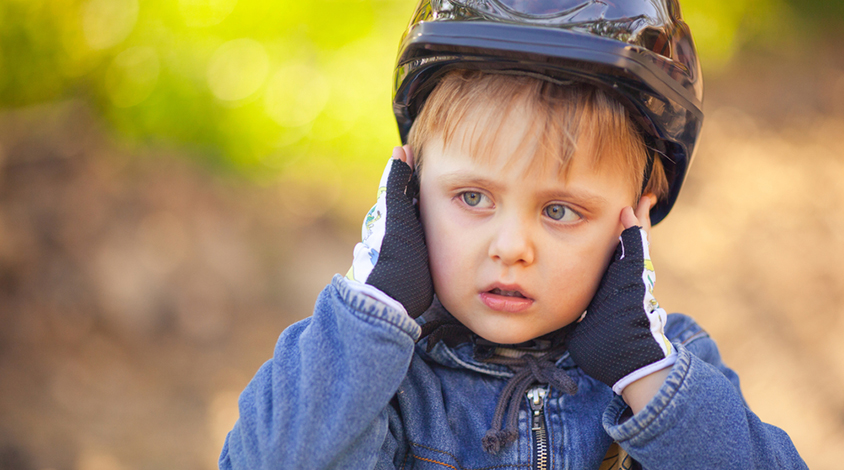
Uncertainty drives anxiety, sensory issues in autism
Helping children with autism cope with the unexpected may ease some of their symptoms.
Many children with autism have a lot of anxiety as well as extreme sensitivities to light and sound. A new study suggests that fear of the unknown drives both of these features, and hints that helping children who have autism cope with uncertainty could ease some of their symptoms1.
The findings support the theory that children with autism perceive the world as overwhelming because they have difficulty predicting how situations are likely to unfold2.
“Autistic children want to have control over their environment, to make it more predictable,” says lead researcher Elizabeth Pellicano, professor of psychology and human development at the University of London. Helping children learn to draw from past experiences to better predict the outcome of future situations may quell their anxiety along with their sensory sensitivities, Pellicano says. The work appeared 10 February in the Journal of Autism and Developmental Disorders.
Up to 84 percent of children with autism have high levels of anxiety, and up to 70 percent have some sort of sensory sensitivity. Studies have hinted that overreactions to sensory stimuli trigger anxiety in people with autism.
Researchers are only beginning to explore how unpredictability relates to anxiety and sensory sensitivity in people with autism. Pellicano’s work provides much-anticipated evidence to support the idea that unpredictability can exacerbate both of those symptoms, says Pawan Sinha, professor of vision and computational neuroscience at the Massachusetts Institute of Technology, who was not involved in the work.
In 2014, Sinha unveiled the provocative theory that children with autism overlook important clues leading up to an event and are often taken by surprise when a situation unfolds. The world can seem unpredictable and overwhelming from this perspective, he says.
“The link between sensory sensitivities and difficulties in handling uncertainty has important implications not only for our basic understanding of autism, but also for potential interventions,” Pawan says. “Instead of attempting to simply ‘dampen down’ the sensory environment of a child on the spectrum, it may be more effective to enhance its predictability.”
Sensory profiles:
Pellicano and her team tested the relationships between anxiety, sensory sensitivity and intolerance of uncertainty in 64 children with autism and 85 typically developing children aged 6 to 14 years, all of whom have at least average intelligence. They confirmed the children’s autism diagnoses using the Autism Diagnostic Observation Schedule (ADOS), which involves clinical observation, and the Social Communication Questionnaire, which relies on parent reports.
The researchers asked one parent of each child to complete the Intolerance of Uncertainty Scale, which measures a child’s ability to cope with uncertain situations, the Short Sensory Profile, which gauges sensory sensitivities, and the Spence Children’s Anxiety Scale.
The results revealed that children with autism show a greater intolerance of uncertainty, along with heightened sensory sensitivity and anxiety, than typically developing children do. The intensity of all three issues tracks with the severity of autism symptoms.
The researchers found that greater intolerance of uncertainty and anxiety accompany more severe sensory sensitivity in children with autism. A similar but smaller association appears in typical children.
Although anxiety levels can partly account for the link between uncertainty and sensory sensitivity, the relationship persisted even after the researchers controlled for anxiety. This result suggests that discomfort with uncertainty triggers anxiety that can make sensory experiences seem especially threatening.
Because the researchers examined the children at a single point in time, a long-term study is needed to confirm the direction of this three-way relationship. For instance, Pellicano says uncertainty might drive sensory sensitivity by causing children to become hyper-aware of their surroundings. But it’s possible that the relationship also works in reverse, with oversensitivity to sounds and smells, for example, causing children to consider unpredictable environments threatening.
The findings suggest that interventions aimed at helping children with autism to cope with unpredictability could help to ease their anxiety and sensory sensitivities.
“What we’re suggesting is that all three of these factors are interacting, and if you act on one of these things, it might have consequences for the others,” Pellicano says.
Recommended reading

Building an autism research registry: Q&A with Tony Charman

CNTNAP2 variants; trait trajectories; sensory reactivity

Brain organoid size matches intensity of social problems in autistic people
Explore more from The Transmitter

Cerebellar circuit may convert expected pain relief into real thing

